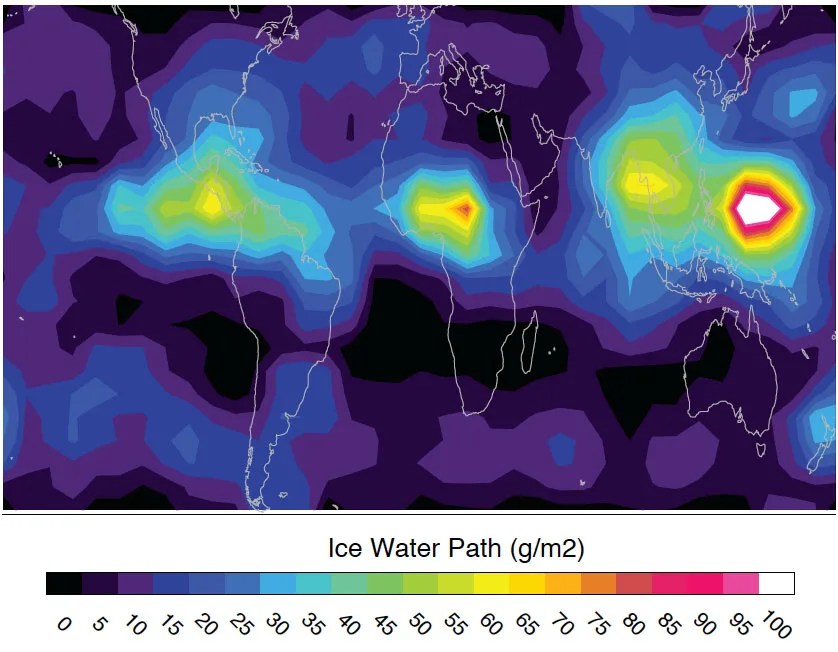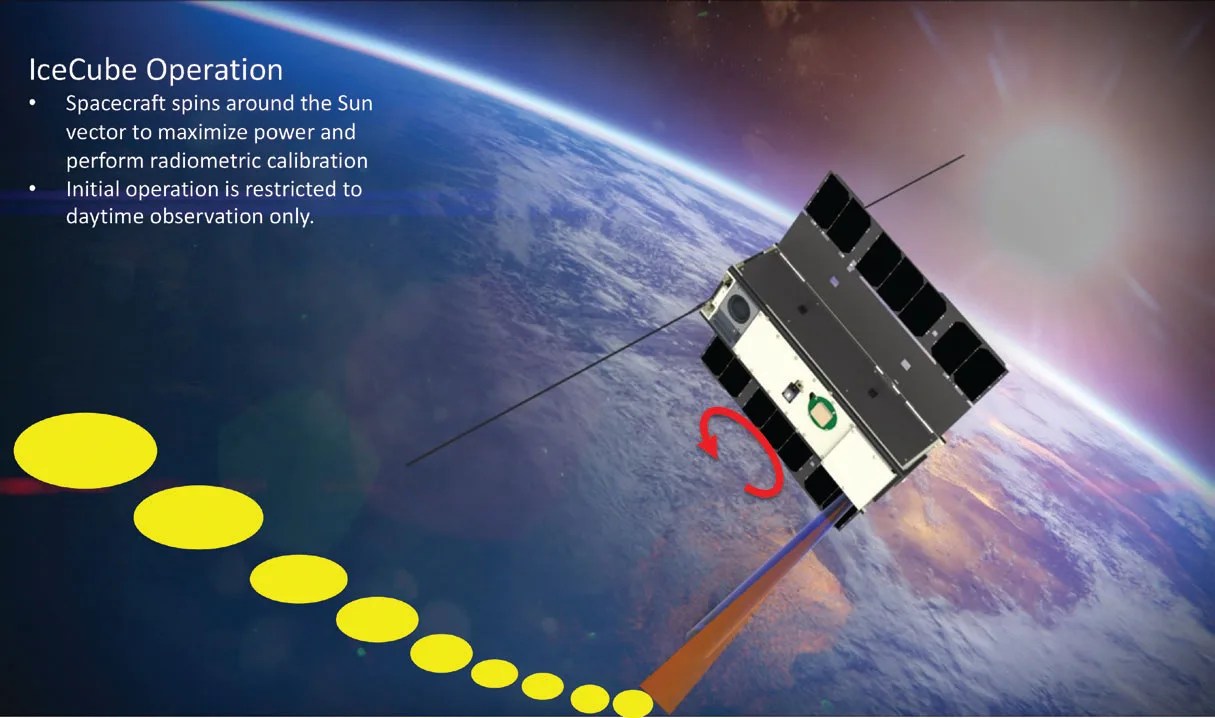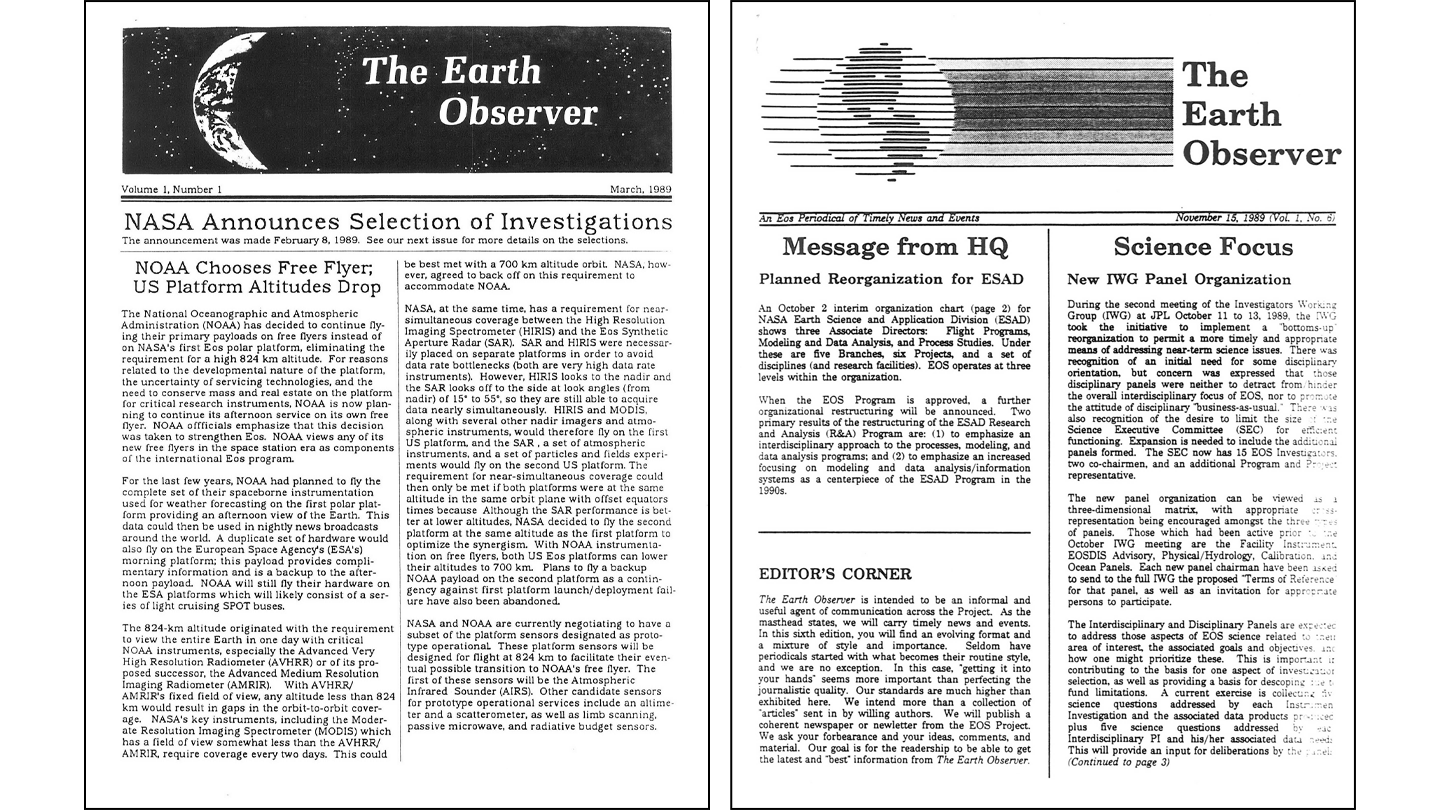Technology Infusion
IceCube—a tiny, bread loaf-sized satellite—has produced the world’s first map of the global distribution of atmospheric ice in the 883-Gigahertz (GHz) band. Information about cloud ice enables researchers to better understand Earth’s weather and changing climate. Sensing atmospheric cloud ice requires that scientists deploy instruments tuned to a broad range of frequency bands. However, it is particularly important to fly submillimeter sensors like the one on IceCube because this wavelength fills a significant data gap in the middle and upper troposphere where ice clouds are often too opaque for infrared and visible sensors to penetrate. Measurements in these wavelengths also reveal data about the tiniest ice particles that cannot be detected clearly in other microwave bands.
Previously, instruments observing at submillimeter wavelengths had only been flown aboard high-altitude aircraft, which limited data gathering capabilities. To demonstrate how new technologies could help fill this observation gap, SMD funded the IceCube project, with access to space enabled by NASA’s CubeSat Launch Initiative. Built in-house at GSFC by a team led by Dong Wu, IceCube is flying an 883-GHz radiometer developed by Virginia Diodes Inc. on a 3U CubeSat platform to test and validate a low-cost commercially available radiometer in the space environment. From its vantage point in space, IceCube is capable of providing global cloud ice data in the important submillimeter wavelength.
Deployed from the International Space Station on May 16, 2017, IceCube began operations in June and is currently demonstrating the utility of submillimeterwave radiometry measurements to advance our understanding of cloud ice and its role in climate change.
Impact
Not only was the demonstration of the new capability to collect submillimeter cloud ice observations from space a success, the IceCube team gained important insights into how to efficiently develop a CubeSat mission with limited funds on a short schedule.
Future Plans
This type of low-cost receiver technology will prove useful for future missions designed to gather important measurements such as the targeted cloud, convection, and precipitation observables recommended by the 2017 National Research Council Decadal Survey (DS). The DS program element is aimed at investigating the coupled cloud-precipitation state and dynamics for monitoring the global hydrological cycle, and understanding contributing processes including cloud feedback, in which multi-frequency passive microwave and sub-mm radiometry are identified as candidate measurement approaches.
Sponsoring Organization
SMD’s CubeSat Initiative and the Earth Science Division’s InVEST program provided the funding for the IceCube mission. The Principal Investigator is Dong Wu at NASA GSFC.
Read more Technology Stories



































